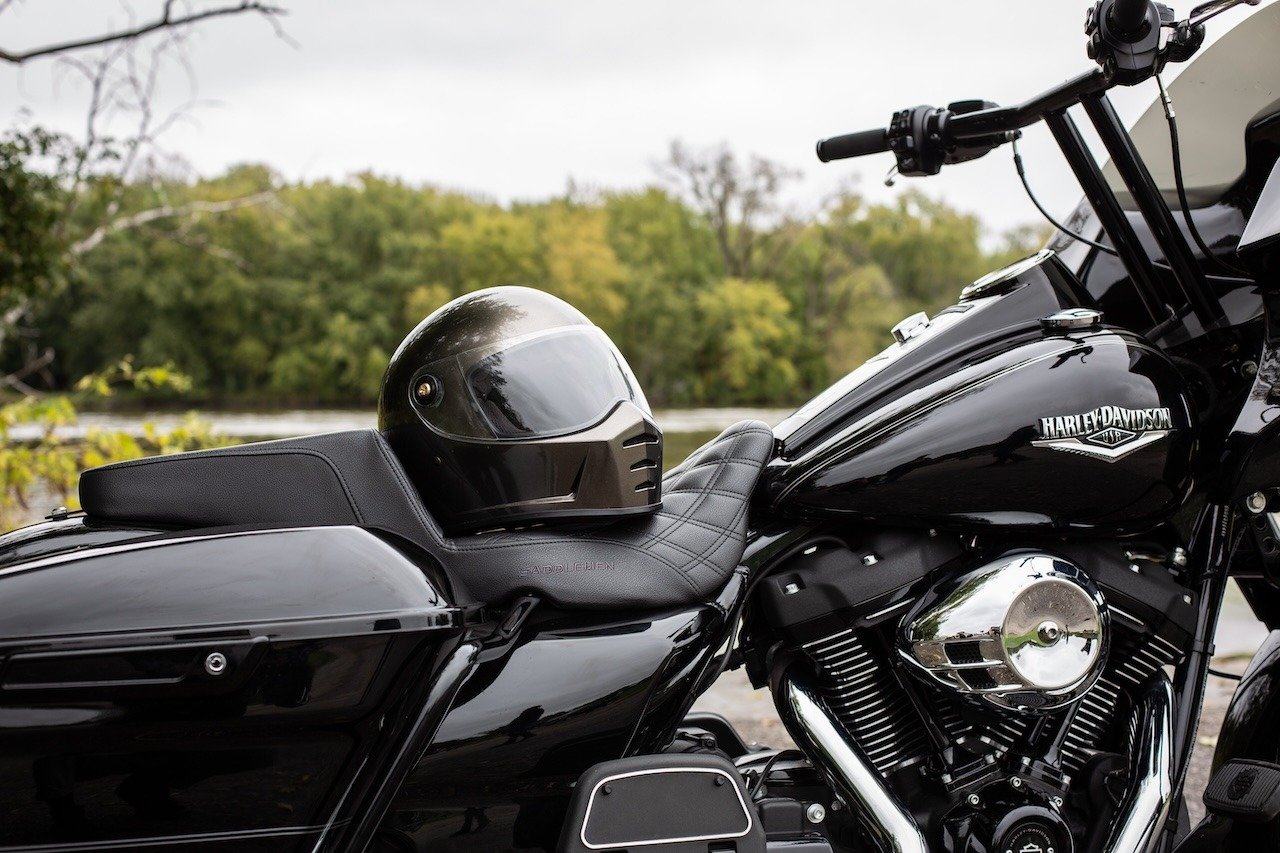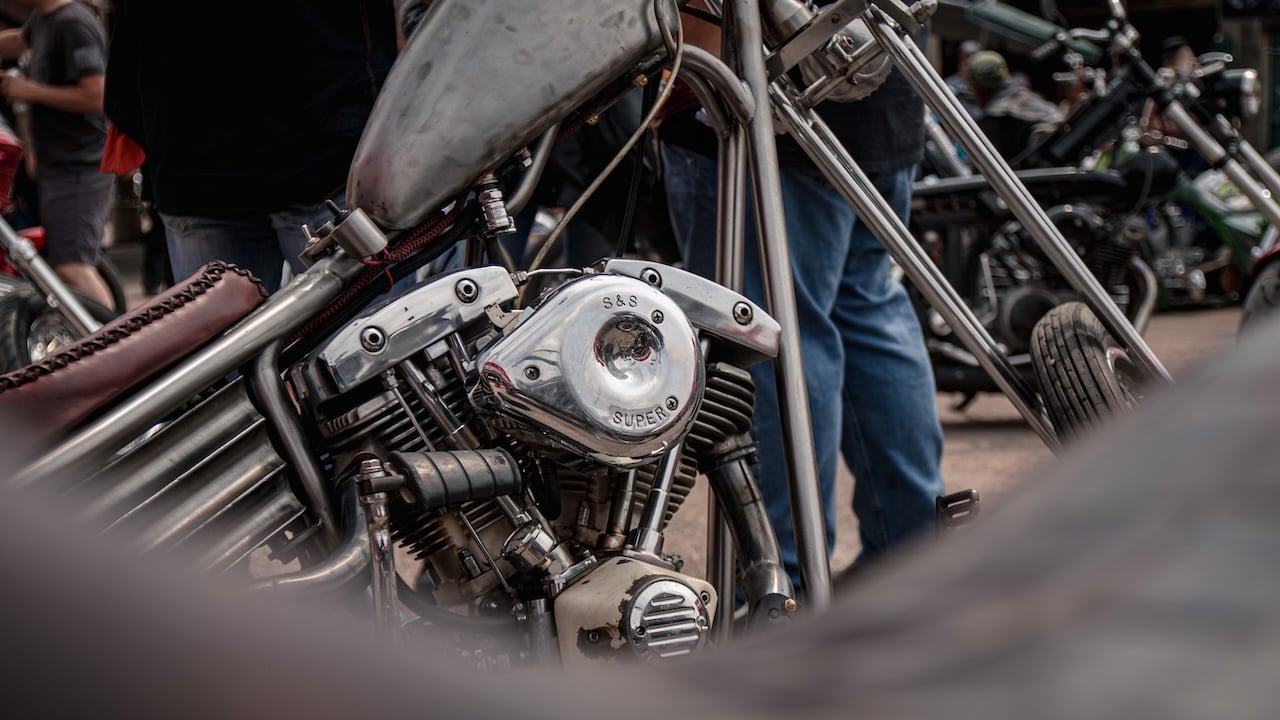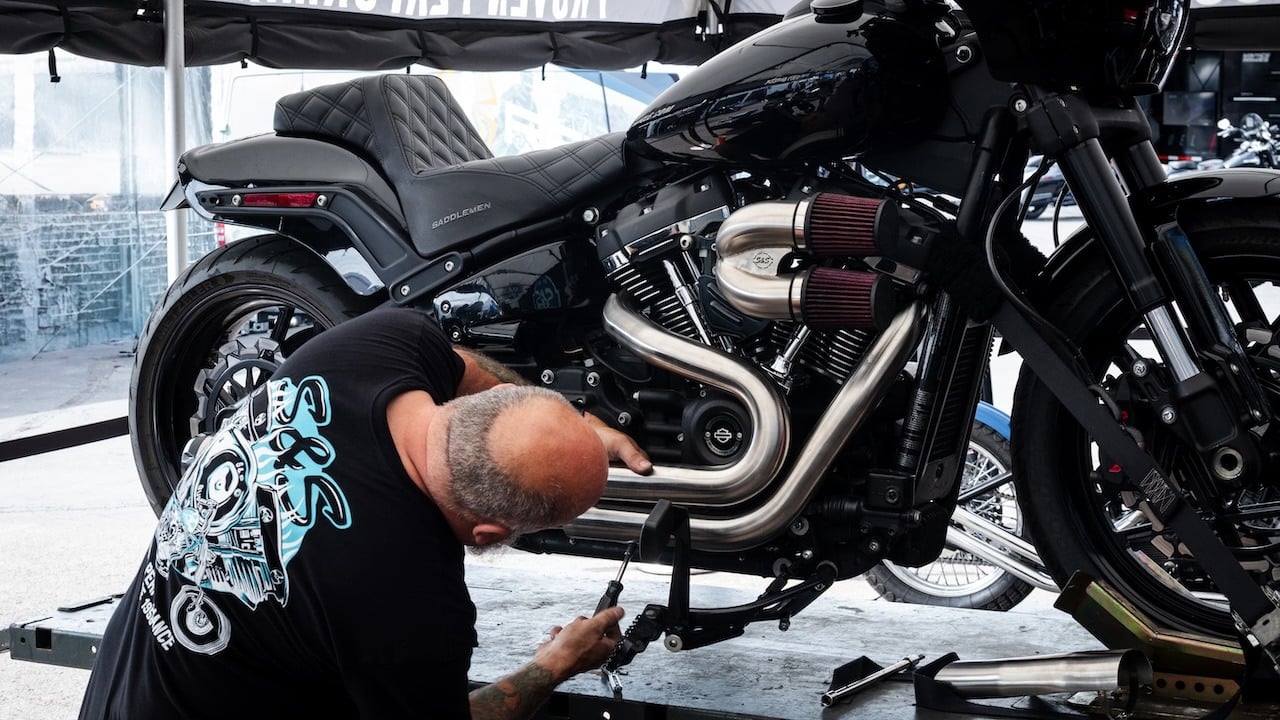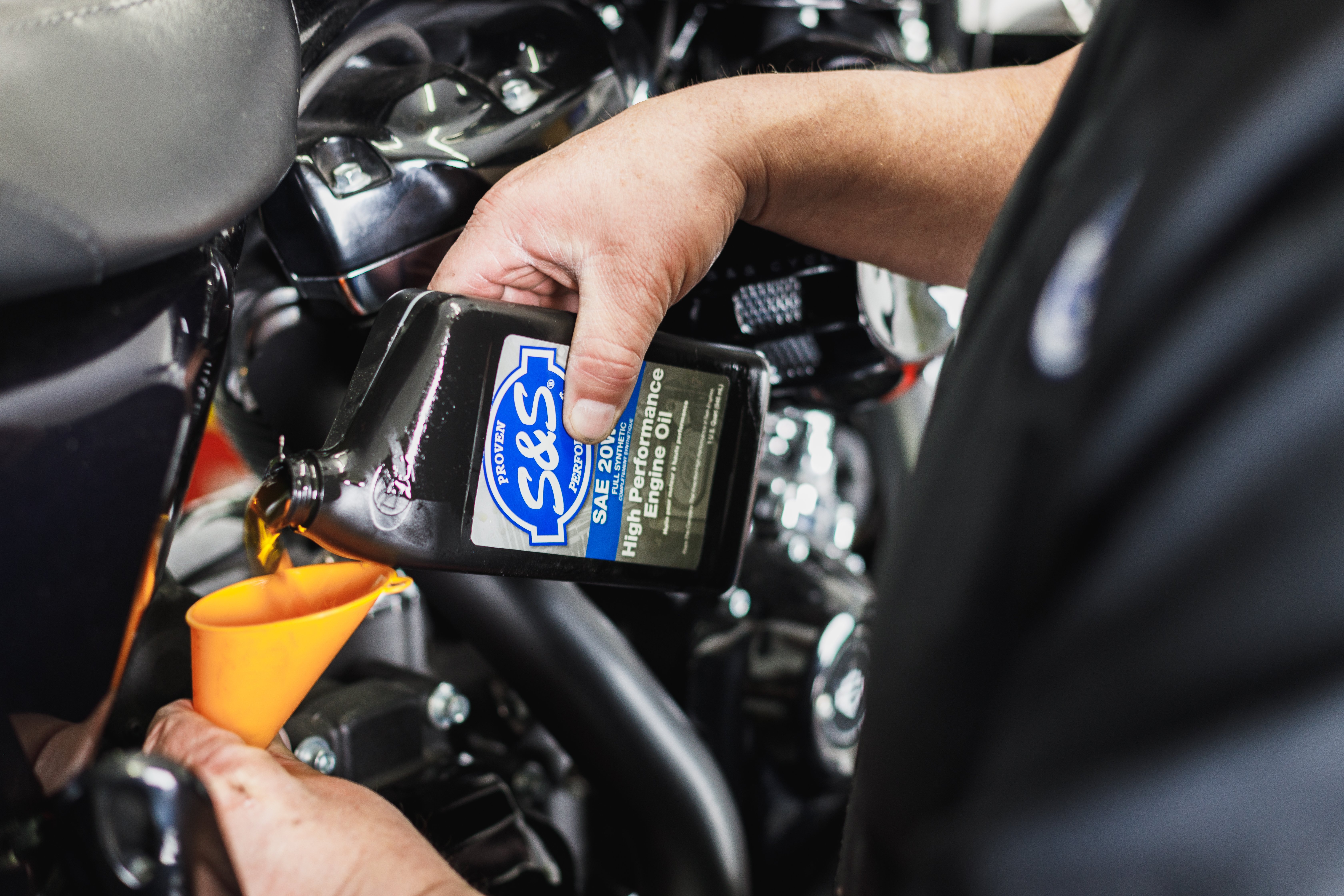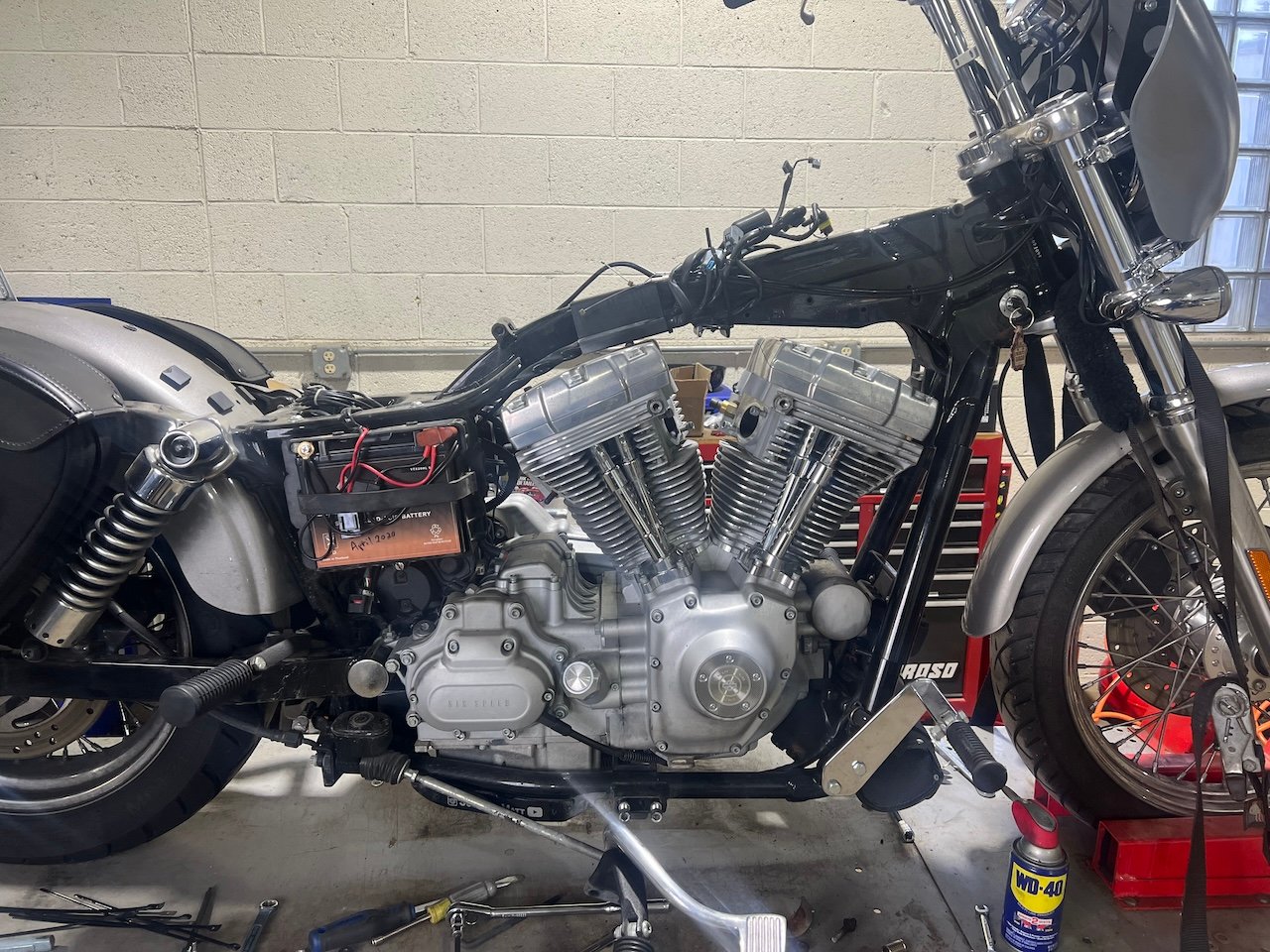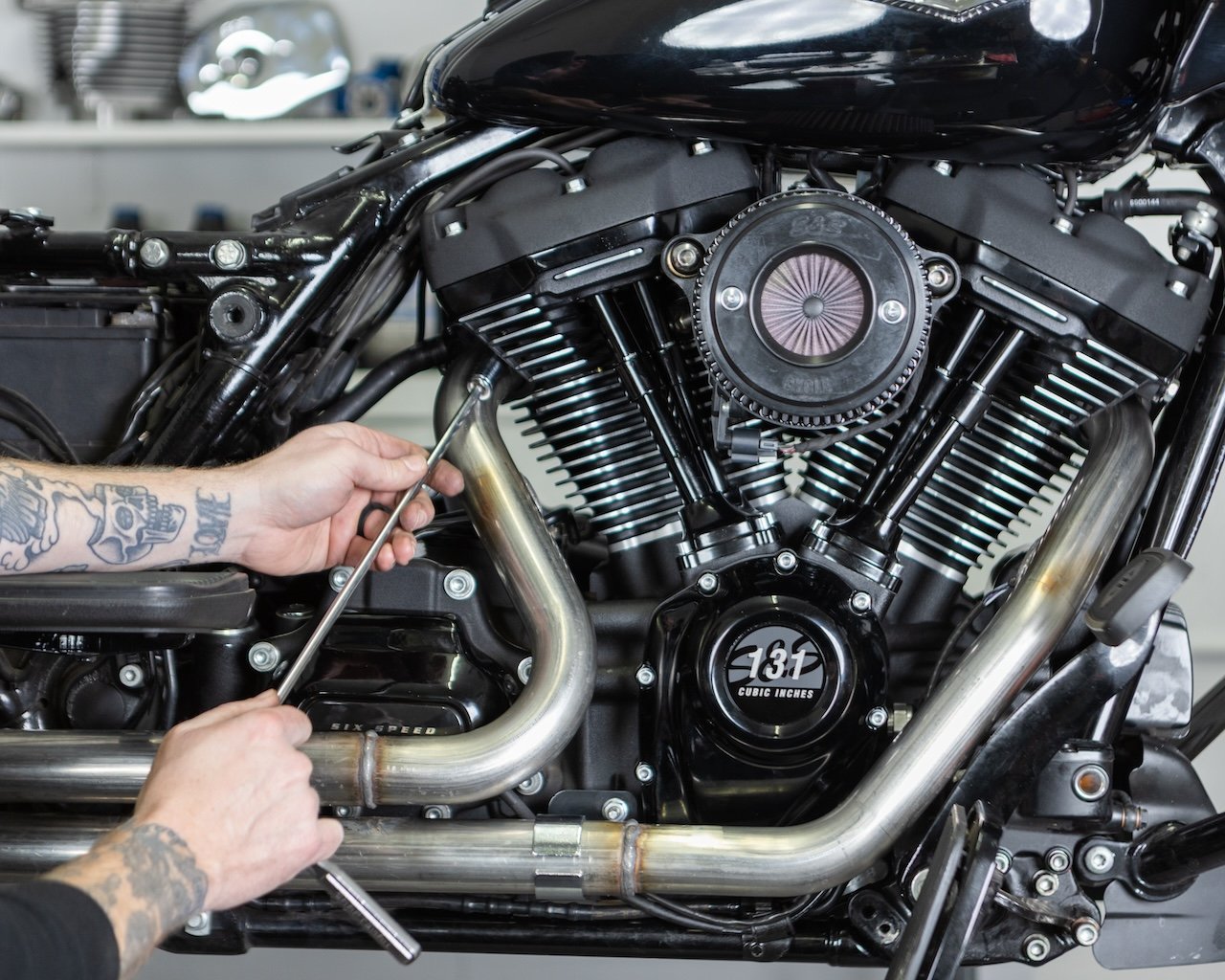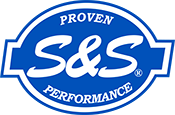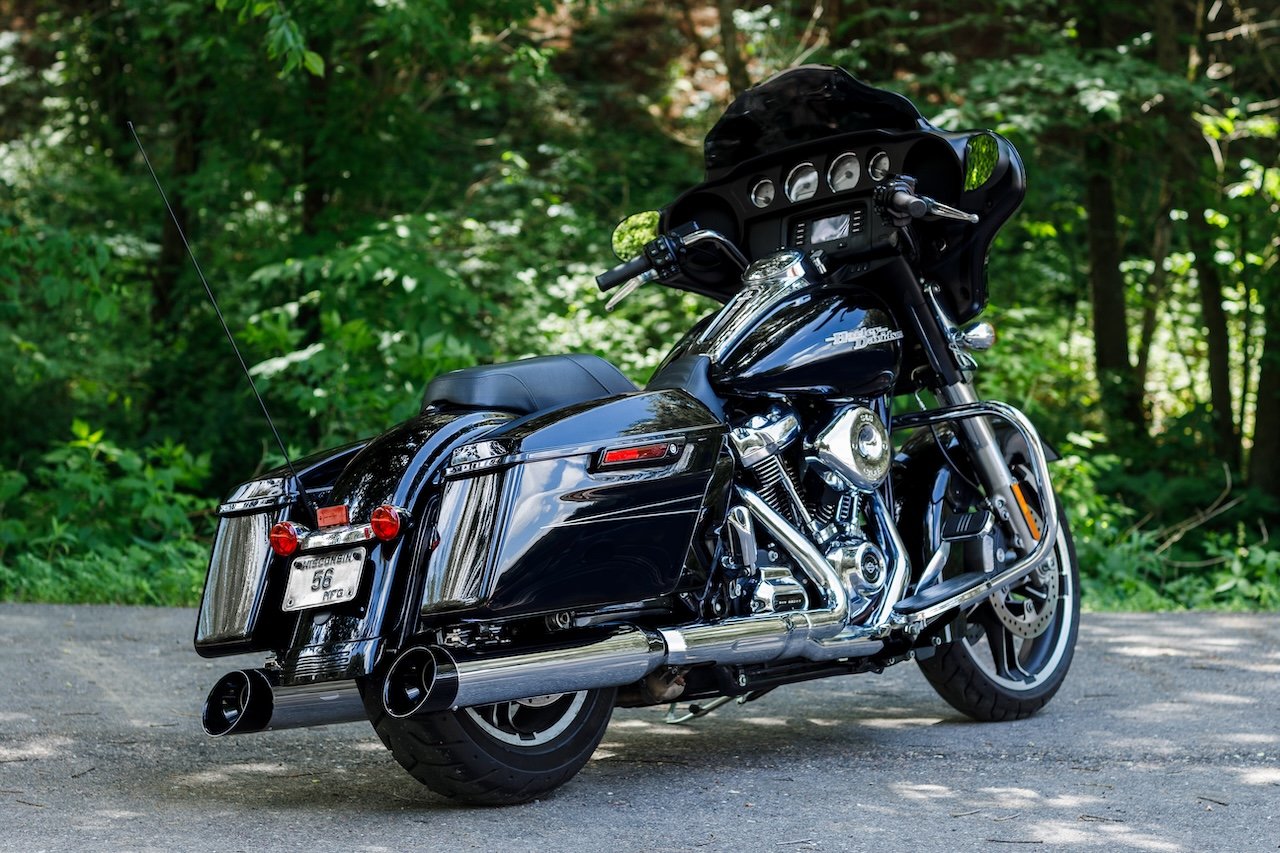
There’s nothing quite like the deep rumble of your motorcycle as soon as you kick it to life and the growl as you open the throttle to accelerate down the open highway. Unfortunately, most stock exhaust systems just don’t have the power or sound quality that many riders are looking for. The good news is that two great upgrade options are available for riders looking to improve their bike’s sound: a set of slip-ons and full-system exhaust. In this guide, we’ll break down these options, listing the advantages and disadvantages of each, so you’ll be able to pick the perfect option for your ride.
What is a Slip-On Exhaust?
A slip-on exhaust is a type of aftermarket exhaust system for motorcycles designed to be easily installed by slipping it onto the existing stock header system. It typically replaces the muffler portion of the exhaust system without altering the rest of the exhaust components. The primary purpose of a slip-on exhaust is to enhance the performance, sound, and aesthetics of the motorcycle.
Advantages and Disadvantages of a Slip-On Exhaust
Slip-on exhausts offer a balance between affordability, ease of installation, and aesthetic and sound customization. However, riders should carefully consider their specific goals and preferences, keeping in mind the potential limitations in terms of performance gains and compliance with local regulations. Here’s a breakdown of the advantages and disadvantages of a slip-on exhaust for your bike.
Advantages of Slip-On Exhausts
- Easy Installation: One of the primary advantages of slip-on exhausts is their ease of installation. They can often be fitted onto the existing stock exhaust system with little or no modifications, making them a popular choice for motorcycle enthusiasts who want to upgrade their exhaust systems without major hassle.
- Cost-Effective: Slip-on exhausts are generally more affordable than full exhaust systems. They provide a cost-effective way to enhance the sound and aesthetics of a motorcycle without the higher price tag associated with a complete replacement.
- Sound Enhancement: One of the main draws of a slip-on exhaust is the sound enhancement. These aftermarket systems can produce a deeper and more aggressive sound compared to the stock exhaust, enhancing your overall riding experience.
- Aesthetics: Slip-on exhausts come in a variety of styles and finishes, allowing you to customize the appearance of your motorcycle. Whether it's Chrome, Black, or Lave Chrome, the aesthetic options are diverse.
- Weight Reduction: By replacing the stock muffler with a slip-on exhaust in some instances, you can often achieve a reduction in overall weight. This weight savings can contribute to improved handling and performance.
Disadvantages of Slip-On Exhausts
- Limited Performance Gains: While slip-on exhausts can offer some performance improvement, especially in terms of weight reduction, they may not provide the same level of power gains as a full exhaust system replacement. Riders seeking significant performance enhancements might need to consider a more comprehensive upgrade.
- Regulatory Compliance: Depending on local regulations, certain slip-on exhausts may not comply with noise emission standards (everyone’s favorite thing). It's crucial to check and ensure that any modifications made to your motorcycle adhere to local laws to avoid legal issues.
- Incomplete System Upgrade: Since slip-on exhausts only replace the muffler portion of the exhaust system, they leave other components unchanged. A full exhaust system replacement might be a more suitable option for riders seeking a comprehensive upgrade for performance reasons.
- Installation Variability: While many slip-on exhausts are designed for easy installation, the actual process can vary depending on the make and model of your motorcycle. Some may require more involved installation steps, and not all riders may feel comfortable performing the installation themselves.
What is the Best Slip-On Exhaust?
The best slip-on exhaust truly depends on the type of motorcycle you have and the sound you’re looking for. For a versatile Harley Davidson Softail slip-on with a nice, deep rumble, here’s what we recommend.
Grand National® Slip-Ons for M8 Softail® Models
Upgrade your M8 Softail® with the S&S® Grand National® 3.25" Slip-Ons for an immediate performance boost. These slip-ons are not only 50-state legal but are also equipped with a high-flow catalytic converter to enhance exhaust flow and overall engine performance.
Featuring a race-inspired Grand National end cap design, the slip-ons are available in chrome and matte black finishes to suit your aesthetics. Experience a deep performance rumble that replaces the stock whisper tone, providing both an auditory and visual enhancement to your riding experience.
These slip-ons also fit 2018-2022 M8 Street Bob®, Low Rider®, Slim®, Fat Boy®, and Breakout® models.
If you’re looking for a slip-on for Harley-Davidson touring models, we recommend:
MK45 Mufflers for ‘95-Up HD Touring Models
What is a Full-System Exhaust?
A full-system exhaust, also known as a complete exhaust system, is an aftermarket modification that replaces the entire stock exhaust system of a motorcycle. This system includes components such as the header or exhaust manifold, mid-pipe, catalytic converter, and muffler. Unlike slip-on exhausts that only replace the muffler portion, a full-system exhaust provides a more comprehensive upgrade to the entire exhaust system.
Here are the key components of a full-system exhaust:
- Header: This is the part of the exhaust system that connects to the engine's exhaust ports. It collects and channels the exhaust gasses from the engine cylinders.
- Mid-Pipe/Collector: The mid-pipe connects the header to the muffler or rear section of the exhaust. It may include additional features such as resonators or catalytic converters, depending on the design.
- Catalytic Converter: In many full exhaust systems, a high-flow catalytic converter is included to reduce harmful emissions by converting pollutants in the exhaust gasses into less harmful substances. Some full-systems may be designed for racing use and omit the catalytic converter for maximum performance.
- Muffler: The muffler is the component responsible for reducing exhaust noise. In a full-system exhaust, it is often replaced or upgraded for improved performance and sound characteristics.
- Tip: The tip is the final section of the exhaust system that expels the exhaust gasses out of the motorcycle. It may have a specific design for aesthetics or performance.
Advantages and Disadvantages of a Full-System Exhaust
A complete exhaust system replacement for your bike brings significant performance gains, but it’s not always the best solution for every motorcycle. You should carefully consider the pros and cons of a full-system exhaust, especially when compared to the more cost-effective slip-on exhaust option. Here is a breakdown of the advantages and disadvantages of a full-system exhaust.
Advantages of Full-System Exhausts
- Performance Gains: Full-system exhausts can provide more significant performance improvements compared to slip-on exhausts. The redesigned components, such as the header and mid-pipe, can enhance exhaust flow and contribute to increased horsepower and torque.
- Weight Reduction: By replacing the entire exhaust system with lighter materials a full-system exhaust can contribute to weight reduction, improving the power-to-weight ratio and overall performance of your bike.
- Comprehensive Upgrade: Full-system exhausts offer a complete overhaul of the exhaust system, allowing for a more integrated and optimized design. This can result in a more cohesive and effective improvement in performance.
Disadvantages of Full-System Exhausts
- Cost: full-system exhausts are typically more expensive than slip-on exhausts due to the inclusion of additional components and the comprehensive nature of the upgrade.
- Installation Complexity: Installing a full-system exhaust may be more involved than installing a slip-on exhaust. It may require more time, expertise, and adjustments to ensure proper fitment.
- Regulatory Compliance: Some full-system exhausts may not comply with emissions regulations or noise restrictions in certain regions. It's important to check local laws and regulations before installing such systems.
What is the Best Full-System Exhaust?
Again, the best full-system is going to depend on your bike as well as your budget. If you’re looking for an excellent performance boost for your Harley Softail as well as a gorgeous sound, this is the exhaust system we recommend.
SuperStreet 2:1 Exhaust Systems for 2018-'22 HD® Softail® Models
The SuperStreet 2:1 is designed to optimize the performance of Softail® models. Featuring a brushed stainless finish for standard chassis, this exhaust system is not only visually striking but also features a stainless steel stepped header for enhanced durability. The class-leading ground clearance ensures a smooth ride. Whether you prefer mid mounts or floorboards, forward controls, or factory passenger pegs, this exhaust system adapts seamlessly. Full heat shields on both front and rear headers prioritize safety and longevity. It's 50 State legal with CARB EO# K-010-22, ensuring compliance for 2018–2022 Softail models.
If your Touring Harley is ready for a full exhaust system, we recommend:
Rev Up Your Ride
Choosing between a slip-on or full-system exhaust upgrade is entirely up to you. Both come with their own advantages, and they help make your bike sound tougher than the stock exhausts will. No matter which route you choose, go with S&S Cycle for all your Harley-Davidson part and accessory needs!
Find the perfect exhaust for your Harley-Davidson. Shop all S&S Cycle exhausts →
You might also like:


